Ultimate Patagonia 10 day itinerary that will knock your socks off
Jagged mountains, howling wind and the raw beauty of
Our Patagonia 10 day itinerary takes you through the most exciting parts of Chilean and Argentinian Patagonia and shows you why Patagonia is a true paradise for nature lovers, adventurers, and photography enthusiasts.
This Patagonia itinerary starts and finishes in Punta Arenas (Chile), however, depending on your previous and following travels, it may as well start and finish in El Calafate (Argentina) or you may make it as a one-way trip from Chile to Argentina or vice versa.
It is a 10 day itinerary, however, we’ve constructed it to remain flexible, allowing you to add or remove days at certain places according to your preferences, time schedule and budget.
You can thus easily make this into a one week or two week Patagonia itinerary. The itinerary offers a choice of self-driving a rental car or using public bus services.
In this article, we give you some comprehensive information on accommodation, restaurants, transportation
Now let’s have a look at those 10 fun-filled days, which include visiting Parque Nacional Torres del Paine and Los Glaciares, having a glass of whiskey on a glacier, hiking, and more!
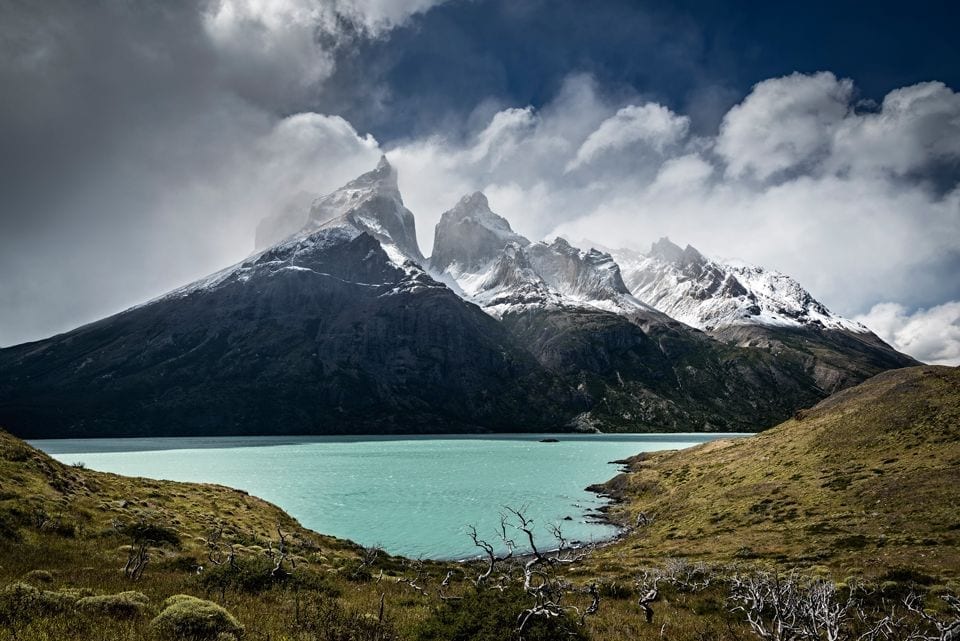
This post may contain affiliate links, which means that if you purchase anything via them, we might earn a small commission – at no extra cost to you. Check our affiliate disclaimer for more information.
Our Patagonia 10 day itinerary
So let’s dive right in – here is the Patagonia trip that we did. After this, you’ll get our best tips for planning your own trip if you’d like to make any adjustments.
Day 1 of Patagonia itinerary – Arrive in Punta Arenas
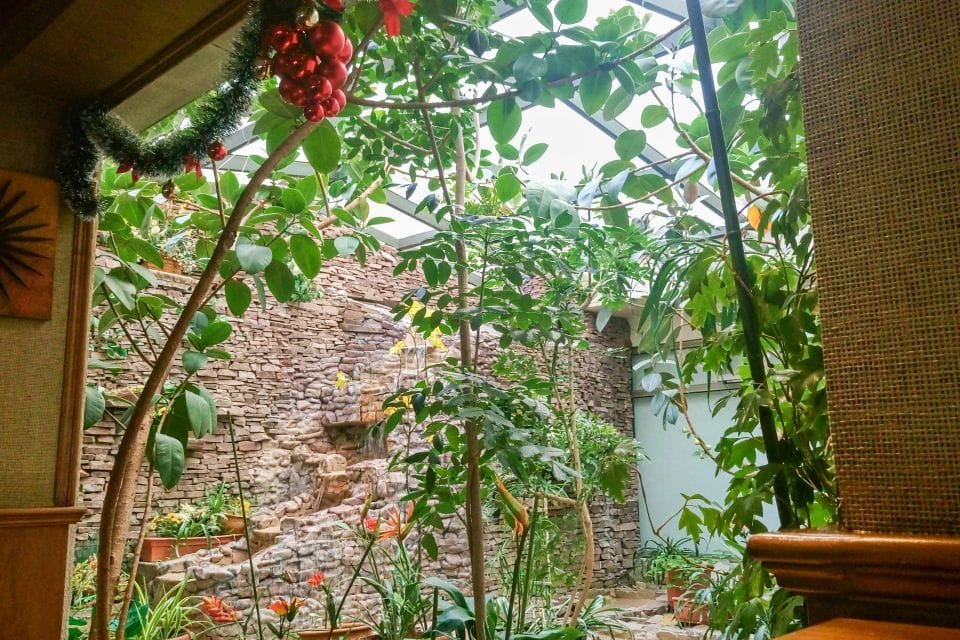
If your flight arrives early enough (i.e. before lunch), you might continue this very same day to Puerto Natales (approximately 3 hours) or Torres del Paine (approximately 5 hours).
While Punta Arenas itself is not the highlight of your trip to Patagonia – you’ve come here for the breathtaking nature – the city is a pleasant surprise and feels different from Chilean cities further north. It is a unique mix of the South American version of Scandinavia with some Croatian influence and a local touch.
Hard to imagine this? Then why not use your free evening here to check it out for yourself – take a pleasant stroll and say hi to the monument of Ferdinand Magellan on Plaza de Armas.
Did you know it was him who named Patagonia Patagonia? His expedition thought the local tribes to be giants with huge feet and called them Patagons, derived from
For dinner try some local delicacies such as Patagonian lamb or king crab with a bottle of great Chilean wine – that will be a perfect start for your 10 days in Patagonia.
Day 2 of Patagonia itinerary – Have fun watching penguins on Isla Magdalena
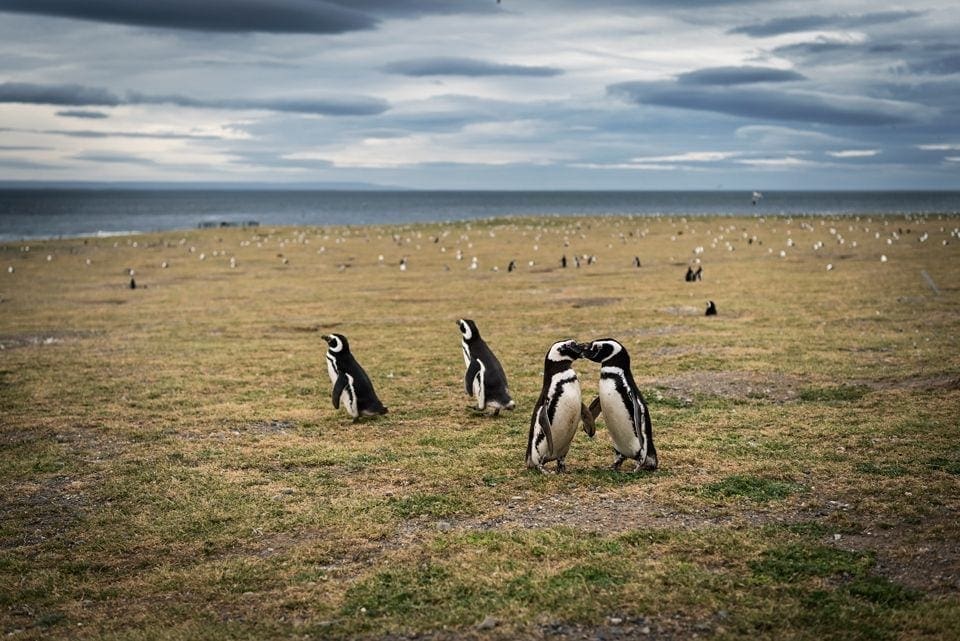
Wanna see penguins? Well, we did!
If you stayed overnight in Punta Arenas, a half-day tour to Monumento Natural Los Pinguinos on Isla Magdalena is a great way how to start your Patagonian adventure.
Isla Magdalena is a small island in the Strait of Magellan, located about 30 km from Punta Arenas. It is
This tour is typically available in the morning, so you would be back in Punta Arenas by noon – a great time to have lunch, pick up your rental car (or take a bus), stock up on some food you might need in Torres del Paine (there are very few options for shopping and they are expensive) and set off to Torres del Paine.
Check availability:
Related: Visiting the penguins on Isla Magdalena is one of the 7 unforgettable experiences not to be missed on your Patagonia itinerary
On the way, stop in Puerto Natales – the closest town to Torres del Paine with a pleasant atmosphere.
By the time you’ve made it here, you probably noticed that Patagonia is one of the windiest regions in the world. So it comes as no surprise that Puerto Natales has its monument dedicated to
If you’re driving, it’s a good idea to refuel here, and even take some extra fuel with you in the containers, as there is no fuel in Torres del Paine.
Days 3, 4, and 5 of Patagonia itinerary – Enjoy the fascinating Torres del Paine National Park
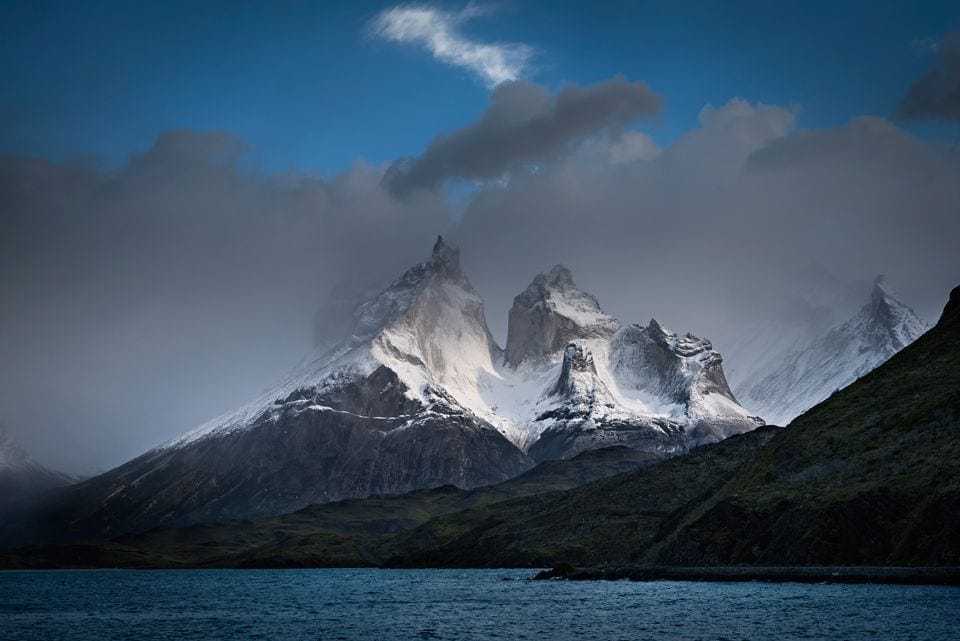
Wherever you go and whatever you do, dress in layers.
Waterproof and windproof clothes will be your best friends, as the weather might be fierce – heavy rain-shower followed by a beautiful blue sky that will soon be turning dark-dark grey, hey, here comes a brief snow-shower and voila, it’s all sunny and warm again.
Related: What to pack to Patagonia
And the wind, oh yeah, that will be one hell of a blow! That is the typical Patagonian weather.
But don’t let that discourage you – Torres del Paine offers some of the best sceneries in the world.
What to do during these three days?
Hike, ride a horse like a Patagonian gaucho, kayak, walk to the viewpoints, take pictures and let the scenery knock your socks off (don’t let the wind knock your hat off, though). There are just so many things to do in Torres del Paine!
When we were here during our own Patagonia trip, the weather was rather bad. We managed a short hike to Lago Nordenskjold, but that was about it.
Other than that, we just drove around the park, stopping occasionally at some interesting spots, and enjoying the views – they were incredible even without hiking! And Michal did some morning photography.
Or are you just feeling lazy? Then open a bottle of Chilean Carmenere and enjoy the fresh air.
It’s pretty much impossible for us to tell you “you should do this hike on this day and that activity on that day”. The weather is wayyyy too unreliable, so the best way is for you to just check out what options are there that match your interests and your budget, make a list, and then make a solid plan for the specific day.
Day 6 of Patagonia itinerary – Drive from Torres del Paine to El Chalten
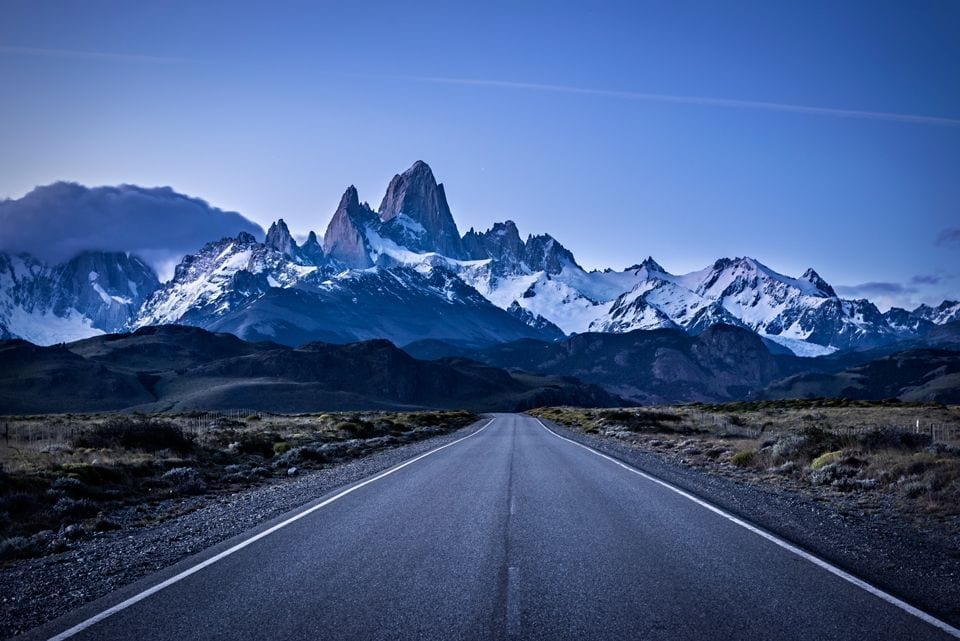
This will take approximately 6 hours, so you’ll be arriving in the trekking capital of Argentina in the afternoon.
The last
Just before entering the small town of El Chalten, the information
Spend the rest of this day relaxing in El Chalten. This small mountain town has a pleasant atmosphere and, unlike Torres del Paine, a rather good and rich food and drink scene, even some artisanal breweries.
Day 6 and 7 of Patagonia itinerary – Enjoy El Chalten and Los Glaciares National Park
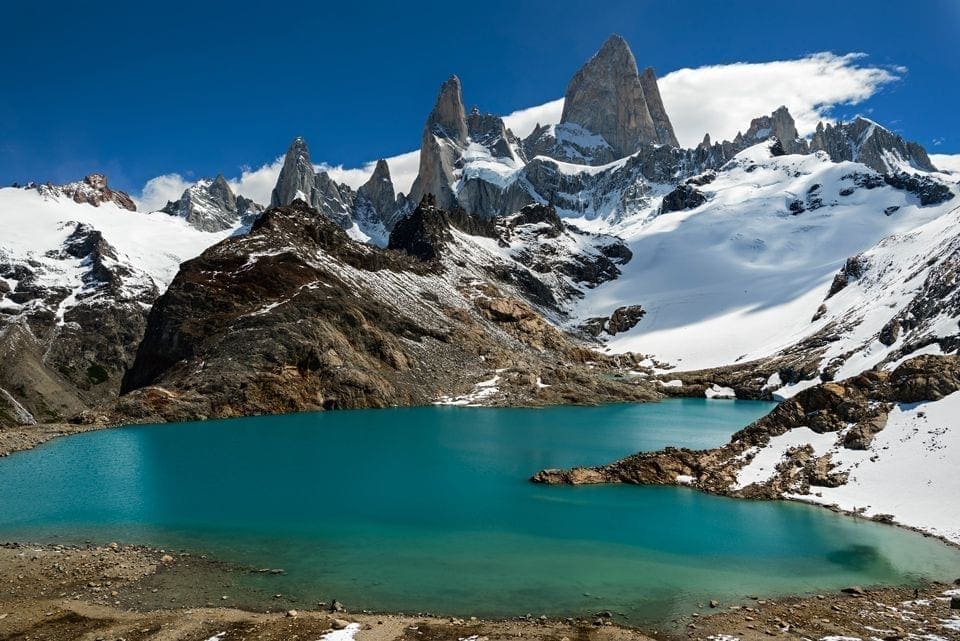
There’s a good reason why they call this place the trekking capital of Argentina – the hikes with some amazing scenery were the highlight of our stay here. Some of the best hikes in Patagonia are there.
There is a hike available for everyone here – from short walks to day hikes.
During our days in Los Glaciares National Park, we did a day hike to the Laguna de los Tres and a walk to the Mirador Los Condores. The weather didn’t permit anything more. Actually, my legs didn’t as well, haha!
Michal again did some amazing morning shots of the mountains around El Chalten – as you could see in the pictures before and in our Patagonia travel diary as well.
Finish off your days with a hearty meal and some artisanal beer – it will taste damn good after the long day of hiking.
Day 8 of Patagonia itinerary – Drive from El Chalten to El Calafate
This will take only about 3 hours, making this a relaxing day after those busy hiking days.
Explore El Calafate, a very pleasant town at the shore of the beautiful Lake Argentino, the biggest freshwater lake in Argentina.
Did you know the town got its name after
Try a
Seriously. Ask any of the locals 😊
Day 9 of Patagonia itinerary – Have an unforgettable whiskey and ice experience on Perito Moreno glacier
Perito Moreno awaits you and it’s gonna be unforgettable. This glacier, located about 80 km from El Calafate, will inspire all of your senses. Watch its impressive
Whether you put on the crampons and walk on the glacier (we definitely recommend this) or just admire it from the shore or from a boat, it is going to be fun for the whole day.
Day 10 of Patagonia itinerary – Say bye to Patagonia
If you’re finishing your Patagonia itinerary in Punta Arenas, you will use this day to drive from El Calafate to Punta Arenas, which will take about 7 – 8 hours.
Refuel before setting off, and then perhaps again in Puerto Natales, which is also a good place where to stop for lunch.
It’s a rather long drive altogether, giving you enough time to reflect on all the amazing memories you’re now bringing with you from Patagonia.
Already feel like returning here? The
Tips for planning your Patagonia itinerary
In this section, we’ll give you some information to help plan your Patagonia trip.
Since Patagonia is quite a remote region, it’s better to plan your vacation there quite a bit ahead of going. There are limited amounts of accommodation, restaurants, and grocery stores. And let’s not even talk about the gas stations!
Plus, what to pack? How’s the weather? Where and when to go? We’re going to answer all of these questions here.
Flights to Patagonia
The two principal airports serving Patagonia are Punta Arenas in Chile and El Calafate in Argentina. There’s a small airport in Puerto Natales, which is the closest airport to Torres del Paine, however, it has only a few flights during summer. Overall, the cheapest flights to Patagonia are from Santiago to Punta Arenas operated by Sky Airline and Jetsmart.
Punta Arenas airport – PUQ
Punta Arenas has numerous daily flights to Santiago, a few of them with a stop-over in Puerto Montt. These are operated by:
- LATAM – usually expensive, unless the flight is part of an international trip, e.g. New York – Santiago – Punta Arenas,
- Sky Airline – low-cost, usually cheap, even ridiculously cheap when booked well in advance,
Jetsmart – similar to Sky Airline.
Also, there are flights to Ushuaia operated during summer by DAP Airline.
We think this is the best way how to get to Torres del Paine – flying down to Patagonia and driving a car.
Puerto Natales (PNT)
Puerto Natales (PNT) has flights to Santiago operated by LATAM several times per week during summer. There are fewer flights available than from Punta Arenas. Also, it’s a more expensive option than flying to Punta Arenas.
El Calafate (FTE)
El Calafate (FTE) has several daily flights to Buenos Aires operated by Aerolineas Argentinas and LATAM (both similarly priced and generally more expensive than the
Word of caution – most of these flights operate to the domestic airport Aeroparque Jorge Newbery in Buenos Aires, while the international flights arrive at Ezeiza airport. In case you’re transferring in Buenos Aires, take this into consideration.
Also, daily flights are available to San Carlos Bariloche and Ushuaia, operated by Aerolineas Argentinas.
Getting around in Patagonia
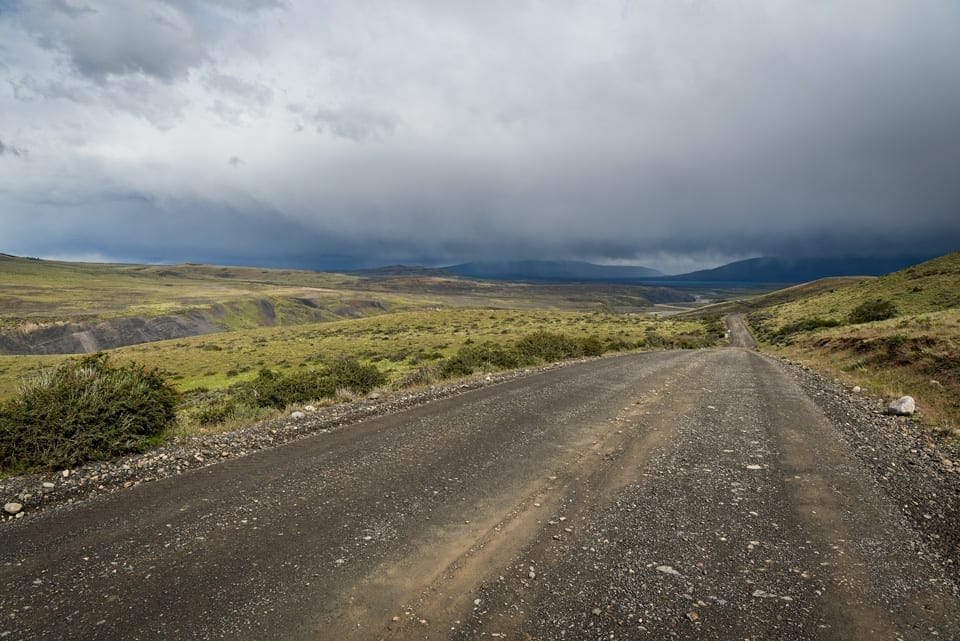
There are two options for how to move around the
Having a hard time deciding which one to go for?
While it mostly comes down to your personal preferences and budget, here’s our advice:
- If the highlight of your visit to Torres del Paine National Park is doing the classical 5-day W trek, we recommend the bus service – you wouldn’t use the car at all during these 5 days, so there’s no point in paying for it.
- If you prefer a mix of one-day hikes with the ability to explore some other interesting locations (not only) in Torres del Paine, we recommend renting a car. A car is a more expensive option but it gives you the
freedom to move around and be flexible. This might be useful if you, for example, wish to make that one amazing hike in Torres del Paine on the day with the best weather. It should also be noted that if the car is shared by 4 people, the cost per person is actually very similar to the cost of taking the buses all the way.
Buses in Patagonia
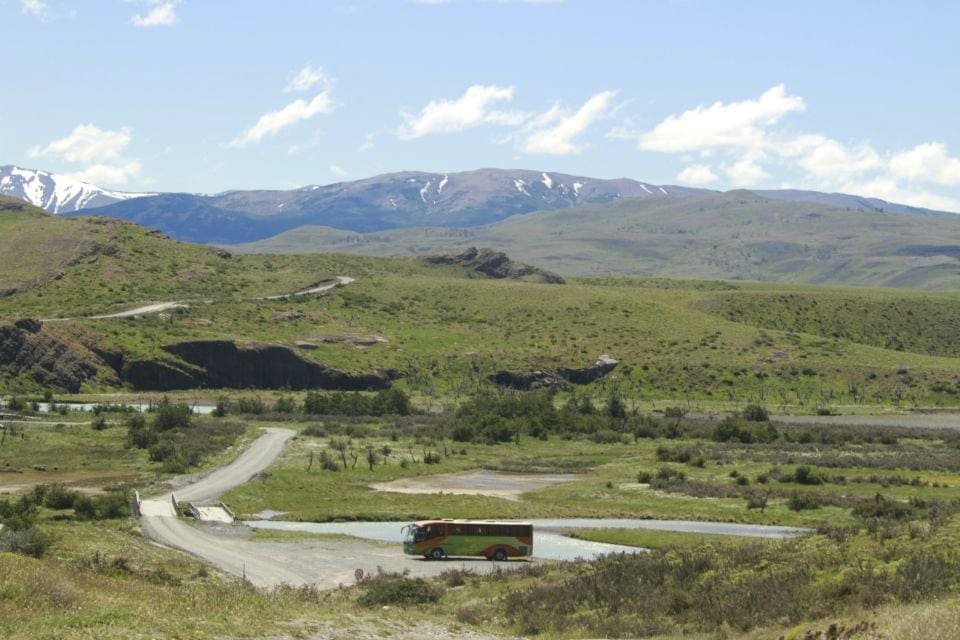
While we don’t have personal experience with using bus services in Patagonia, the below-mentioned companies seem to get the best reviews. It is recommended to book tickets online in advance, especially in the high season.
Chilean Patagonia
For moving around Chilean Patagonia, Bus Sur offers the most frequent connections.
They operate:
- several times daily from Punta Arenas (either downtown or straight from the airport) to Puerto Natales (approximately 3 hrs),
- twice daily (might be different if you’re visiting in low season) between Puerto Natales and Torres del Paine (approximately 2 hrs, stopping at Laguna Amarga and Pudeto locations in the park)
- daily service between Puerto Natales and El Calafate, Argentina (approximately 6 hrs).
Argentinian Patagonia
For moving around Argentinian Patagonia, there are the options of Cal-Tur or Chalten Travel, both offering several daily connections between El Calafate and El Chalten (approximately 3 hrs).
For visiting Perito Moreno Glacier from El Calafate,
Renting a car and driving in Patagonia
There are several car rental agencies (not too many, though) in the main Patagonian hubs: Punta Arenas, Puerto Natales and El Calafate. Most of them are small local companies, with some international brands being available as well.
You can rent a car in Chile and take it to Argentina or vice-versa. The rental gets more expensive like this due to the required insurance, however, it is a very convenient way of exploring both the Chilean and Argentinian sides of Patagonia. This is the way we did it, and we definitely recommend exploring Patagonia this way.
We reviewed most of the agencies while deciding which one to choose for renting a car in this remote area.
Obviously, we were looking for a reliable company that would provide us with a middle-sized car and arrange all the paperwork required to take it across the Chilean-Argentinian border, all of this for a competitive price. Based on our email communications, we had the best feeling about renting from ADEL Rent a car based in Punta Arenas.
A 10-day rental of Renault Symbol from ADEL, including all the paperwork to drive to Argentina, amounted Duster SUV (the smallest car available when writing this article) for 10 days, including visiting Argentina, amounts to around 1090000 CLP. We were happy with this company and would recommend them.
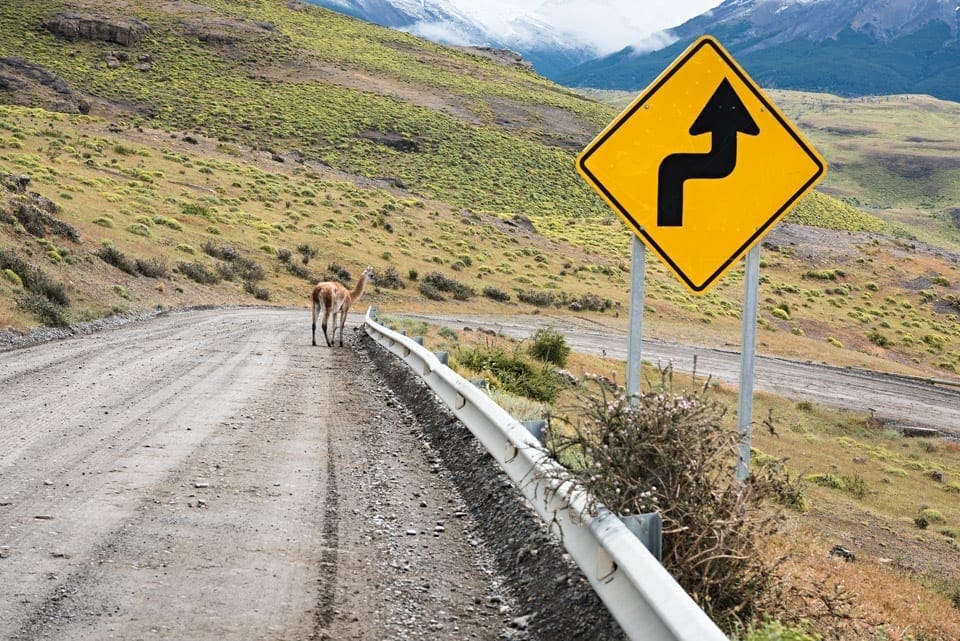
Driving in Patagonia
Is driving in Patagonia easy and pleasurable? Yes, with just a few words of caution:
- The roads are generally empty and in good condition, except for the roads in Torres del Paine itself, which are gravel roads with some potholes.
- Also, a very short section in Argentina closest to the Chilean border is a gravel road and an old asphalt road with potholes. They were still perfectly ok for our 2-wheel-drive, though, just keep the speed down on bumpy sections.
- There’s a good chance it will be windy (or even bloody windy) while driving, so we recommend keeping both hands on the steering wheel, especially if meeting a bus or a truck in the opposite direction.
- The whole area has only a few gas stations – in Punta Arenas, Puerto Natales, Esperanza, El Calafate, and El Chalten, so it might be a good idea to have some extra fuel in a separate container (supplied by the rental agency).
- Also, the whole area is very sparsely populated and doesn’t have cell phone coverage in most of the unpopulated areas.
- None of the rental companies that we researched offered GPS (saying that GPS coverage is very unreliable in the area, so it is better not to use it), so we recommend using good old paper maps. It’s nothing to worry about, though, as there are only very few roads with mostly good signs, so the chances of turning onto the wrong one are very slim.
Accommodation in Patagonia
Punta Arenas
Punta Arenas has plenty of options for all budgets.
Puerto Natales
Again, plenty of options for all budgets.
If you’re considering staying here while visiting Torres del Paine, be aware that the driving time to Torres del Paine is between 1.5 – 2 hours (depending on where exactly in the national park you want to go) one way – that’s a lot of extra driving.
On the other hand, there are far more options for accommodation and food in Puerto Natales compared to Torres del Paine, and at cheaper prices.
Torres del Paine
As far as accommodation is concerned, the magnificent park is the trickiest part of the whole Patagonia itinerary – the options are few and expensive.
The highest season is January and February, and this period may require booking several months in advance. The options include
- hotels – either in the Rio Serrano sector, just outside the southern entrance to the national park, or scattered at a couple of locations inside the national park, as well as in Cerro Castillo at the Chilean-Argentinian border,
- refugios – located at convenient places around the main trekking paths. They offer only dorm rooms with shared bathrooms
- and campsites – located also at convenient places around the main trekking path, some of them located next to refugios.
We have a comprehensive article about hotels in Torres del Paine, where you’ll find descriptions of hotels available in the park and a separate article about refugios and camping sites in Torres del Paine.
Search for accommodation in Chilean Patagonia
El Chalten
The hiker’s paradise has plenty of options for all budgets.
However, during the main summer season (Jan – Feb) we recommend you book in advance, although you’re much more likely to find some last-minute options here rather than in Torres del Paine.
El Calafate
El Calafate has plenty of options for all budgets.
Search for accommodation in Argentinian Patagonia
Where to eat and what to eat in Patagonia
While the amazing outdoors is the highlight of this Patagonia itinerary, the local food certainly can rank high on the list of your experiences.
What’s a typical food in Patagonia you’re asking?
Patagonian lamb (
As for where to eat, here are some options for each of the main places.
Punta Arenas
Punta Arenas has plenty of restaurant options. We can recommend the restaurant La Marmita offering Chilean home-style cooking with a
Puerto Natales
Puerto Natale, again, has plenty of options. It’s another great place for trying out lamb or king crab. We recommend the restaurant Afrigonia offering an interesting and unique Patagonian-African (yup!) fusion.
Torres del Paine –
Just as with accommodation, again, Torres del Paine is the trickiest part of the whole Patagonia itinerary.
The options there are few and the prices are high.
There are no restaurants in Torres del Paine by themselves, so you’ll be limited to meals offered by hotels and
Other than that, there is a single cafeteria at Pudeto (close to Salto Grande waterfall) open during the
If you wish to save a bit or prefer your own snacks for the trekking, grocery stores such as Unimarc in Punta Arenas (preferably) or Puerto Natales (smaller and more expensive) will be your friend – plan ahead.
While not directly in Torres del Paine, we can recommend the restaurant in Estancia El Ovejero Patagonico (the hotel is recommended as well) in Cerro Castillo. It’s about one hour’s drive from the eastern parts of the national park and right by the border crossing to Argentina. The hotel is an interesting option to consider, for example, for the last night in Torres del Paine, before driving to El Chalten.
El Chalten
There are various restaurant options available, most of them on the main street Av. San Martin.
We recommend La Cerveceria Chalten with its own microbrewery – a hearty meal and artisanal beer are exactly what you need after a whole day of hiking. The place is popular and gets damn busy in the evenings, so make sure to not arrive late.
El Calafate
Again, plenty of options are available.
We recommend La Tablita for some great Argentinian
Best time to visit Patagonia
80 km/h, 100km/h, 80 km/h… These are not the speed limits on Patagonian roads, but rather the forecasted wind speed, written by chalk on the board inside the visitor’s centre in Torres del Paine.
Yup, Patagonia is one of the windiest regions in the world.
A typical day will be one when you’ll need your windproof and waterproof clothes as well as your sunglasses. If you have clear blue skies for the whole day, you’re extremely lucky. If it’s just pouring rain for the whole day (oh yeah, we remember this from Torres del Paine), you’re rather unlucky. Anything in between, and you have a rather typical day in Patagonia.
The region has four seasons, and it’s nothing unusual to experience all of them in one day. I remember asking the park rangers in Torres del Paine what season has the best weather… you should see how that question made them laugh!
Having said these facts about the wayward Patagonian climate, the answer to the question “When is the best time to visit Patagonia” would be that the most popular times to enjoy
Summer (Jan – Feb) brings most of the crowds and (theoretically) the warmest temperatures and the strongest winds. Autumn (
If you plan to visit other places in Argentina or Chile, the best times to visit are pretty similar.
What to pack for Patagonia
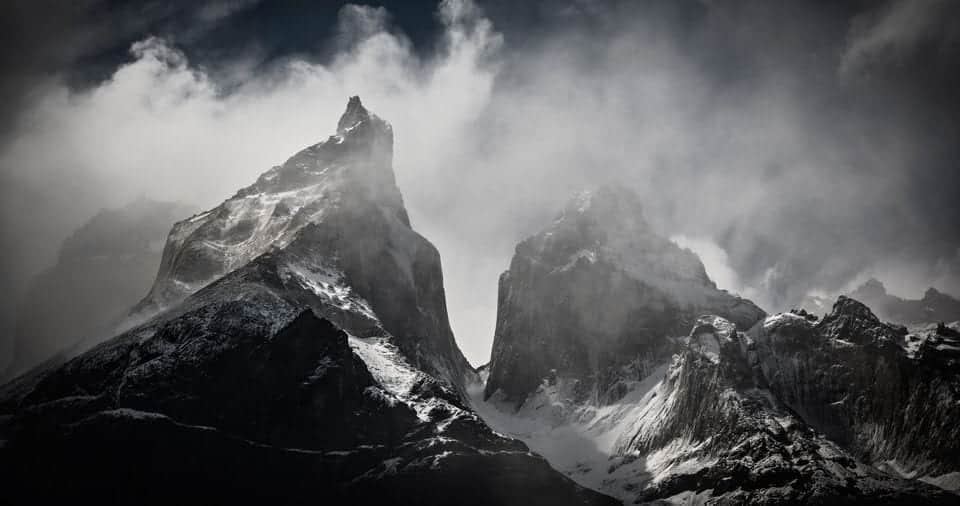
For Patagonia, always pack things that are good for cold, windy, snowy, rainy, and sunny weather. Easy, right?
Well, don’t worry, we’ve got you covered. In this article, you’ll find everything you need to take with you when packing for Patagonia.
But in short, besides the essential things to pack for travelling, you should take:
- Clothes: No matter what season you’re visiting, you’ll need to dress in layers. As the weather is changeable, the ‘feels like’ temperature might change by as much as 20 degrees Celsius (36 deg Fahrenheit) within an hour. The outer layer should be waterproof and windproof. Proper trekking shoes and socks are needed for hiking, trekking poles may be useful as well for longer hikes. You might need a hat, scarf
and gloves, as well as sunglasses, sun lotion, and lip balm. - Camera and other photography gear that you use.
A waterproof camera bag is recommended. Drones are not allowed anywhere in Torres del Paine and Los Glaciares national parks. - Cash: while most hotels and restaurants accept credit cards, cash is needed to pay entrance fees in Torres del Paine (21,000 CLP) and Los Glaciares (south section – Perito Moreno – 500 ARS). There are no ATMs in Torres del Paine.
Budget for a 10 day Patagonia itinerary
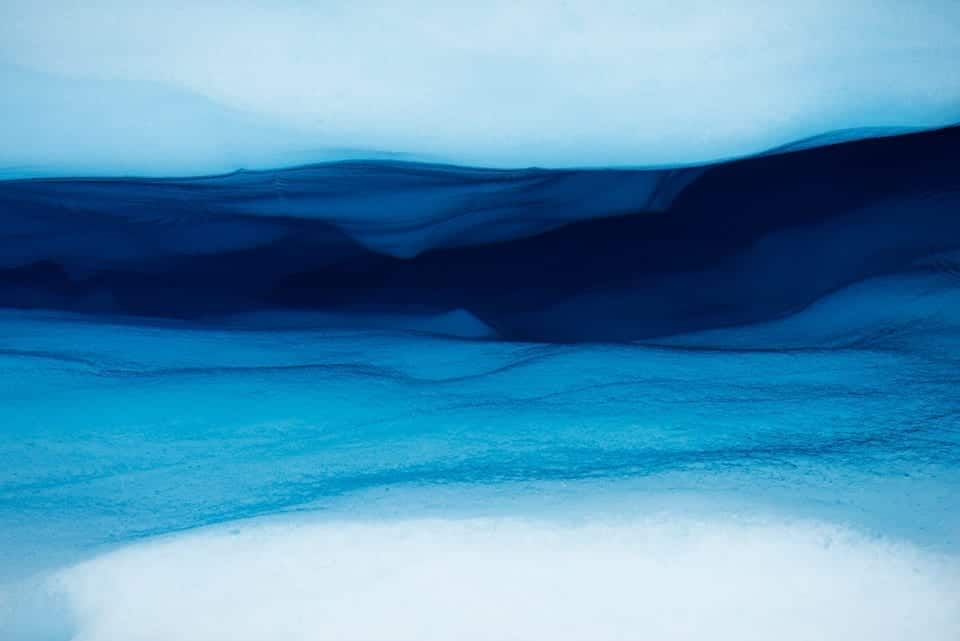
Let’s face it: Patagonia, and especially Torres del Paine is not a cheap place. Having said that, there’s no need to worry, though – our Patagonia itinerary won’t bankrupt you, as there are always ways of finding cheaper alternatives.
The great news is that with the current availability of cheap low-cost flights to Patagonia (from Santiago to Punta Arenas), this amazing part of the world has never been cheaper and easier to reach.
Once in Patagonia, our biggest expenses were accommodation, food
Accommodation:
Accommodation will cost an average of 60 EUR/USD per person per night, based on double occupancy (double room) in mid-range hotels, breakfast included.
Can be as low as 12 – 17 EUR/USD per person per night if staying at hostels and campsites.
Food:
An average meal per one: 20 EUR/USD in good quality restaurants.
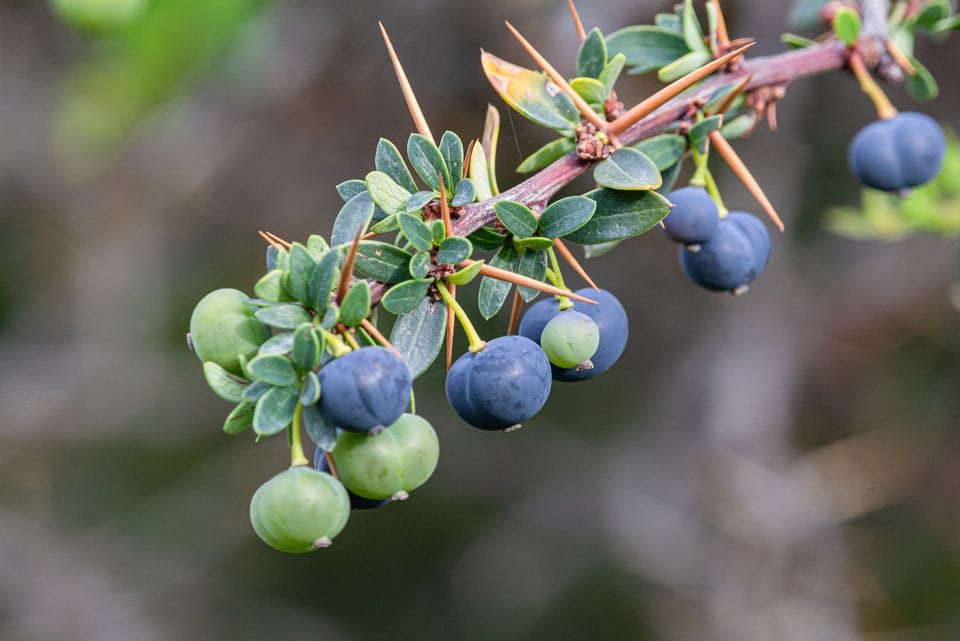
Getting around:
Bus tickets: Approximately 150 – 170 EUR/USD per person for the suggested itinerary.
Car rental: starting from 650 EUR/USD for the car for 10 days for the suggested itinerary + the cost of fuel.
Entertainment:
Entrance fees to national parks: Approximately 45 EUR/USD per person.
Activities/tours: Not cheap, but damn worth it! Starting from 150 EUR/USD per person for the suggested activities (visiting the penguins and trekking on Perito Moreno).
Health and safety precautions
Patagonia is among the safest places in South America. No special health precautions are necessary. We recommend taking out travel insurance – it’s always a good idea for any outdoor activities.
If you’re unsure which insurance to take out, check out Safety Wing. I’ve heard very good things about it, and, among other things, it covers hiking up to 4500m elevation, which is enough for Patagonia.
About driving in Patagonia – it’s safe as well, but make sure to follow basic safety tips.
National parks covered in this Patagonia itinerary
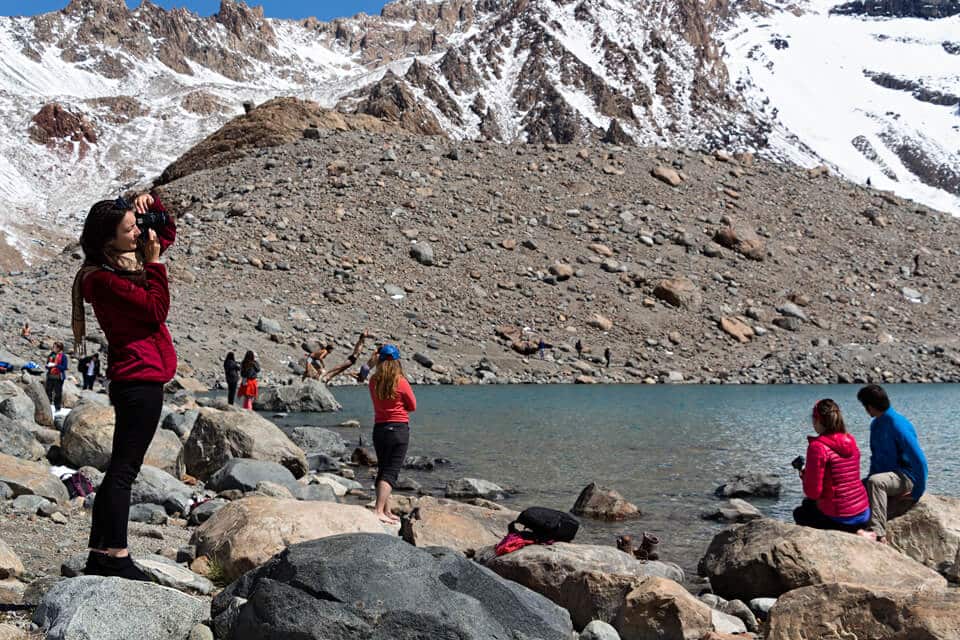
There are two national parks that we cover in this Patagonia itinerary: Torres del Paine and Los Glaciares.
Torres del Paine National park
There’s no argument that Torres del Paine is one of the most beautiful national parks in Chile, if not in the world.
Its towering mountains, turquoise blue lakes, vast grasslands, and shining glaciers are inviting adventure and ecology lovers, adventurous hikers and leisurely tourists alike.
Torres del Paine is located in the very south of Chile, in the Magallanes region – region Magallanes y Antártica Chilena.
There are loads of things to do in Torres del Paine, for every taste and activity level. You can go on walks or even dedicated tours to observe very interesting animals or go hiking, ride a kayak or take a boat to enjoy the glacier Grey up close, and much much more.
Los Glaciares National Park
Los Glaciares – literally “the glaciers”. Home to many glaciers, glacial lakes, and rugged mountains, it’s the largest protected area in Argentina.
The park is located in the southern end of Argentina, in the Santa Cruz province.
Just like Torres del Paine, a huge number of things to do are available in Los Glaciares. The hiker’s paradise – El Chalten – is located at the northern end of the Los Glaciares national park. You can don crampons and hike one of the numerous glaciers here; go horse riding; nature watching; and on and on.
Summary of our Patagonia 10 day itinerary
Patagonia is definitely one of the most incredible places left in the world.
The scenery – and weather – are wild, raw, and breathtaking!
Of course, we could have added some more things and more places to visit. For example, Tierra del Fuego or Cerro Torre. There is just so much to do that the trip could extend exponentially!
I’d say this Patagonia 10 day itinerary combines some of the best Patagonia has to offer – some incredible hikes and activities, but also a chance to relax. Isn’t that how vacations should be?
What is something that you would like to do most in Patagonia?
Like this post? Pin it!
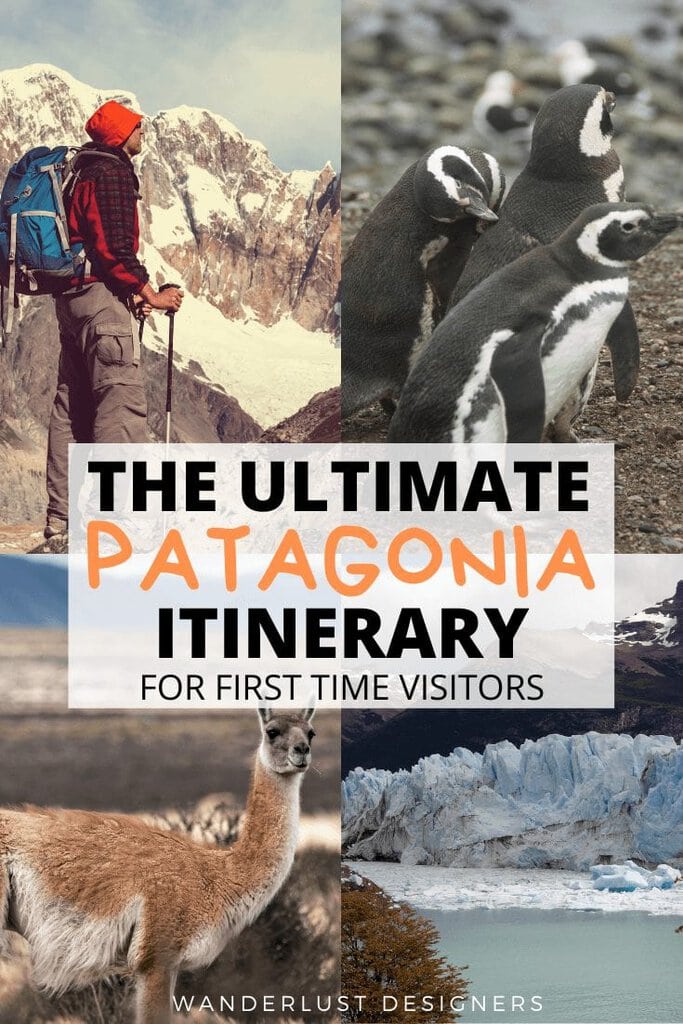
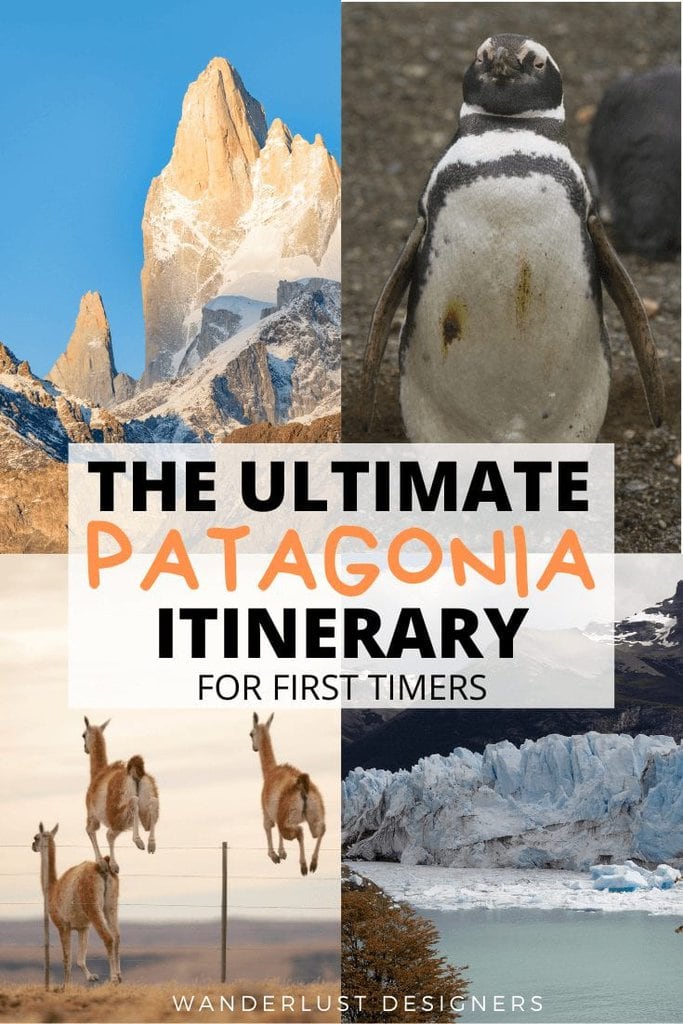

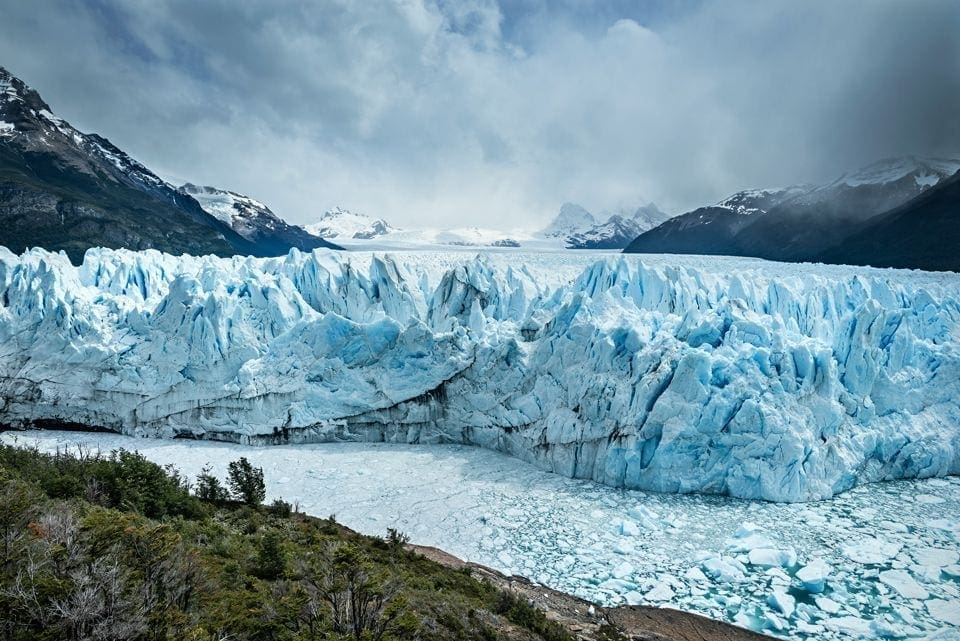






Great headline about your clothes being blown off. Didn’t realize it is so windy in Patagonia.
Haha, thanks!
I would love to talk to you. My wife and I are spending 10 days or more in Pategonia. If it is possible to call you let me know.
Hi Mark,
I’m not doing calls at this time, but I’m happy to answer any questions you have in an e-mail! You can contact me at kristine@wanderlustdesigners.com
Best,
Kristine
I love Puerto Natales area as theres a lot of option and a budget friendly for accommodation and have a lot of food options. I wanted to try the paella. I pinned this and added to our bucketlist! Thanks for sharing your experiences.
Thank you!
We wanted to travel to Patagonia a few years ago, but as you said it’s windy (and cold), and we both don’t like cold weather, haha! Also, the only months we can travel for a longer period is in July and August, but that’s not the best time to go to Patagonia… Who knows, maybe in December someday.
Yeah, it is cold there, haha!
Hm, yeah, it might be troublesome to travel in July and August with the reduced services, so I hope that you can get some time off in December!
Patagonia is nuts. I have a hard time wrapping my brain around South America = Glaciers and Penguins
Right? It’s crazy!
Your article brings back wonderful memnories from our Patagonia trip. We did, however, only stay on the Chilean side of the border. In Torres del Paine, we were surprised how good the road conditions were. Yes, those are dirt roads, but they were in real good conditions and we were able to drive 30-50km/h.
In Puntas Arenas, we enjoyed the Museo Nao Victoria and a stroll along the seafront. Puerto Natales is a beautiful small town with wonderful nature views.
I agree – although the roads are dirt, they are in a good condition!
Sounds like you had an awesome trip as well!
Your post reminds me of my incomplete trip to South America. My plan was to travel from the Northernmost point in South America to the Southernmost point in South America. I did travel to the northernmost point before getting stuck in Colombia due to the pandemic. This is a really detailed post about Patagonia. Bookmarking it for my future trip 🙂
Ohhh, that sounds like it would have made an incrediblllle trip!!! I hope you manage to finish it one day!
And thanks for bookmarking!
This looks like a really unforgettable trip! I would probably want to do the bus tour but for driving, did both Chile and Argentina accept an international license? I know especially in non-English-speaking countries their acceptance can be limited. I also had no idea that it was so windy in Patagonia! Dressing in layers sounds like good advice!
Hey, Kevin,
about the driver’s licence – from what I can see, it actually depends on the country. For some, it’s ok to have a driver’s licence issued by their own country, and for some, an international licence is required. This article from Condor Campers has the list of countries.
Pack for the worst, hope for the best will forever be my packing mantra! I love that. Patagonia is way at the top of my bucket list, I really enjoyed reading this information post!
Oh, that’s a golden quote!
I hope you manage to go there! It is an amazing place!
Great article. In the process of planning a trip to Patagonia with my 13 year old and this is really helpful. ☺️
I’m really happy that you found this helpful! I hope your trip goes really well!
Loads of great information. Thank you! We are travelling in Feb/Mar 2024. I may have missed it in the article but what time of year did you visit Patagonia?
Hi Sara,
Thanks for your feedback, it’s really nice to hear it!
We visited Patagonia in the middle of December, so summer.
Cheers,
Kristine
Hi Kristine! Question, you mention driving around TDP for 3 days before continuing on to El Chalten. How did you have enough gas for all that driving? Did you have to loop back to Puerto Natales at any point for gas? Going in December and managed to get accommodations in the park, but worries we’ll still need to go back anyway.
Hi Janneta,
We had an extra container of fuel in our car that the car rental gave us. We filled the car and the container in Puerto Natales and then the car from the container in Torres del Paine. After that, there were gas stations in Argentina.
So yeah, make sure to ask for a container for the fuel. Otherwise, it’s quite tricky. Going to Puerto Natales… yeah.
Hope this helps!
Kristine
I have never been come to Patagonia. your trip looks interesting. hope i can follow your tour itinerary
Hey Gede,
I hope you can, too! Enjoy!
Cheers,
Kristine